Rank Species | Higher classification Widow's-thrill | |
 | ||
Similar Widow's‑thrill, Kalanchoe tomentosa, Crassulaceae, Bryophyllum fedtschenkoi, Bryophyllum daigremontianum | ||
Elephant ear kalanchoe kalanchoe beharensis
Kalanchoe beharensis (commonly known as elephant's ear kalanchoe, felt bush, or feltbush) is a plant species in the succulent genus Kalanchoe, and the family Crassulaceae. Kalanchoe beharensis is native to Madagascar.
Contents
- Elephant ear kalanchoe kalanchoe beharensis
- Kalanchoe beharensis propagation elephant ear kalanchoe
- Plant structure
- Reproduction
- Defense system
- Carbon fixation
- Care
- Cultivation
- References
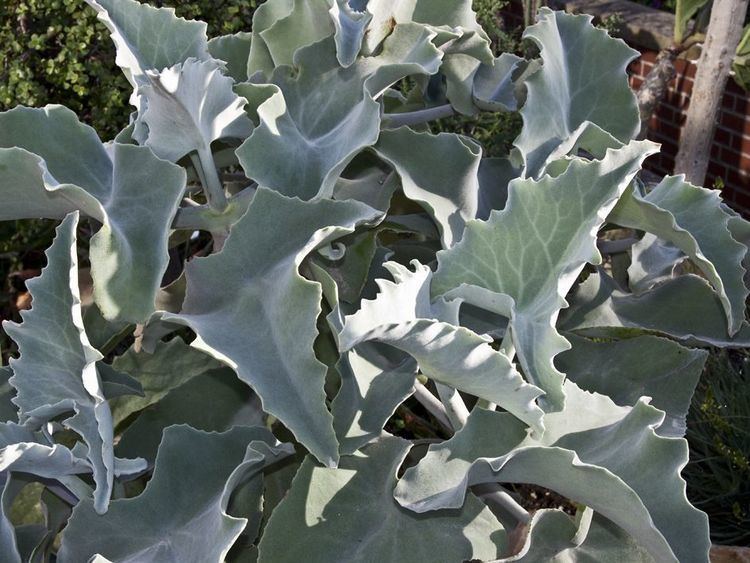
Kalanchoe beharensis propagation elephant ear kalanchoe
Plant structure
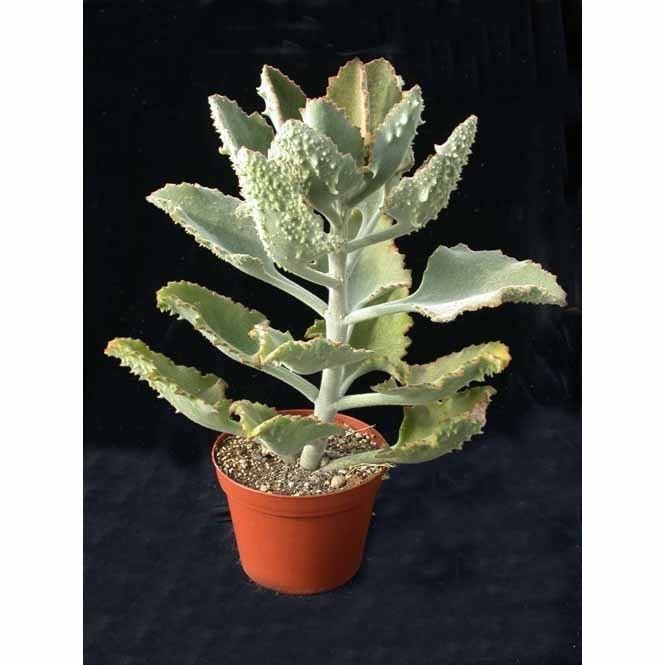
K. beharensis is an evergreen shrub, 3–5 ft (1–2 m) tall. The stem is about 1.5 m (4.9 ft) long, and is slender and knotted. Leaves are olivaceous in color, triangular-lanceolate shaped, decussately arranged with leaf margins that are doubly crenate. Each leaf is about 10 cm (4 in) long and 5–10 cm (2–4 in) wide. The bottoms of the leaves are glabrous and they are covered with a woolly hair towards the apex. The leaf hairs are brown, and tips of the teeth are darker. The hairs on the stem, younger leaves, and petioles are white. A sign of older leaves is concavity on the upper surface. Inflorescences are 50–60 cm (20–24 in) high, forming a branched corymb. Flowers are on short pedicels (stalks). The calyx is 7 mm long with lobes that are oblong and acuminate. The corolla tube is urn shaped and 7 mm long. Blooming occurs from spring to summer, and flowers are small and yellowish. The type of trichome present on the leaves of Kalanchoe, vary among the different species. The different types of trichomes are an indicator of adaptation to a particular environment. On the leaf blade of the beharensis species there are tichomes of the non glandular, bushy three-branched type. This type of trichome is dead with evidence of tannin. Beharensis trichomes are also characterized by striped cuticular ornamentation on their surface. Glandular trichomes are also present on beharensis species leaves, with more on petioles than on leaf blades, and more on the top of the leaf as opposed to the bottom.
Reproduction
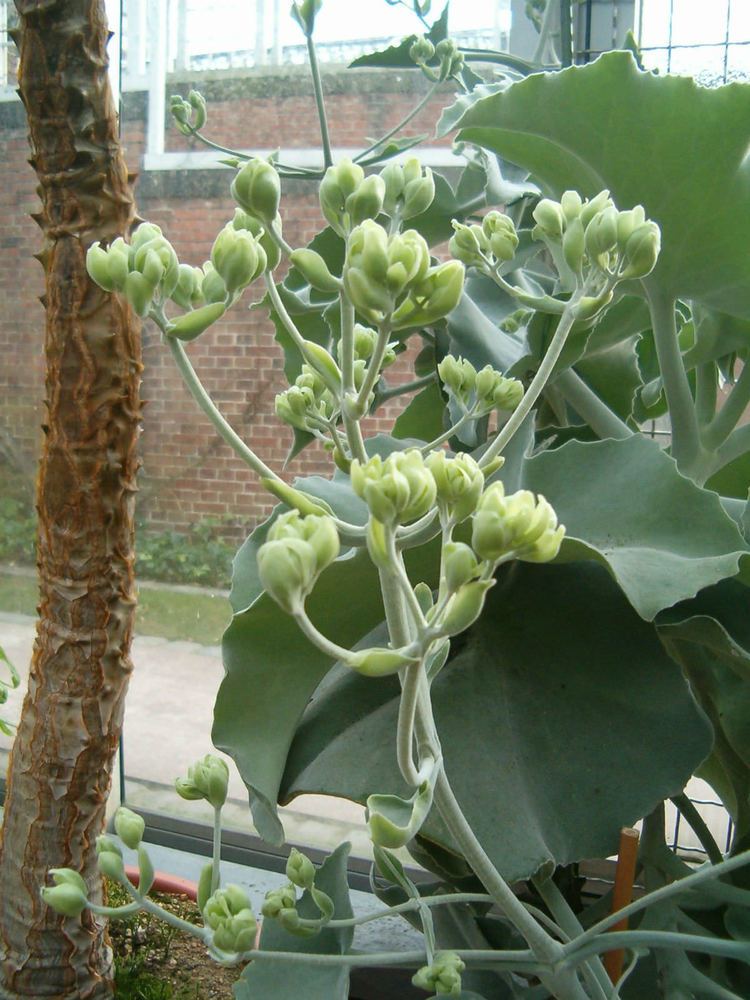
The Kalanchoe genus may reproduce asexually by producing plantlets on leaf margins, which when distributed on a suitable substrate will form new plants. Plantlet-forming species fall under two categories. The first category is induced plantlet-forming species that produce plantlets under stress. The second plantlet-forming species is constitutive plantlet-forming species that spontaneously forms plantlets. Induced plantlet-forming species have the LEC1 gene that allows them to produce seeds, whereas the constitutive plantlet-forming species have a defective LEC1 gene and cannot produce seeds. The beharensis species produces seeds as well as the plantlets.
Defense system
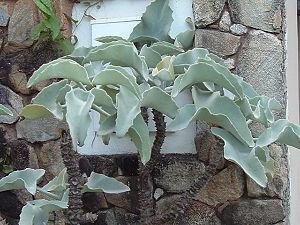
Kalanchoe beharensis uses a system of defense, not unique to this plant, termed stress-limited defence. This system involves deterring herbivores before a high stress level ensues which causes cracking in the tissue of the plant. High hardness, a structural component of this system is characterized by tissues with high density. Since the tissues of plants employing this defense system have a high density, the defenses, commonly spines, prickles, thorns and hair, must reside on the surface of the plant. Amorphous silica is found in the defense structures with a microhardness of about 5000 MPa, which is higher than the microhardness of insects, and of mammalian enamel with a microhardness of 3500 MPa. Through research, this defense system is shown to decrease the amount of plant matter eaten by vertebrate herbivores by reducing the size of the bite a herbivore takes, the volume of a bite, or the rate at which biting occurs.
Carbon fixation
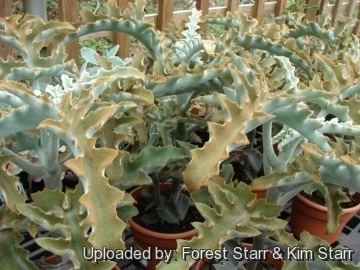
The first field study of crassulacean acid metabolism, a type of carbon fixation, has been done on Kalanchoe beharensis Drake Del Castillo, in a paper by Kluge et al. entitled "In situ studies of crassulacean acid metabolism in Kalanchoe beharensis Drake Del Castillo, a plant of the semi-arid southern region of Madagascar." The study includes information on diel patterns of CO2 exchange and transpiration. It also includes measurements of fluctuations in organic acid levels, PEP carboxylase properties and water relations. Some conclusions of this study are that Kalanchoe beharensis advantageously performs CAM fully during the entire arid seasons, avoiding CAM idling. This plant can do this because of its ability to maintain the correct water balance in its leaves, even in periods of drought.
Care
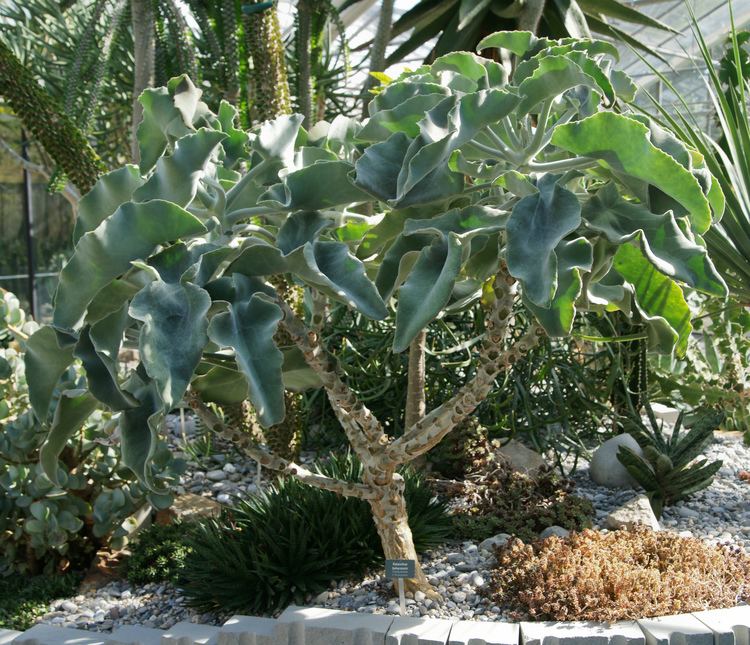
This plant needs full to partial sun, with intermediate to warm temperatures. It will survive frost on a scale from light to moderate. For growth in a greenhouse Kalanchoe beharensis will grow in a mixture of equally distributed loam and sand, and gravel for drainage. The plant should be dry before watering again, as too much water will kill it. Watering should occur every 14–20 days during the growing season. In the winter months Kalanchoe beharensis should be watered sparingly. The species is resilient and will survive if neglected.
Cultivation
It may be grown as a houseplant or outdoors in mostly frost-free landscapes and is not toxic to dogs if it has not been treated with any chemicals (according to the National Animal Poison Information network). Propagation is by seed, stem cuttings, or by leaf cuttings, in which the mid rib should be cut in various places. The cuttings should be grown on a sandy substrate.
This plant has gained the Royal Horticultural Society's Award of Garden Merit.
